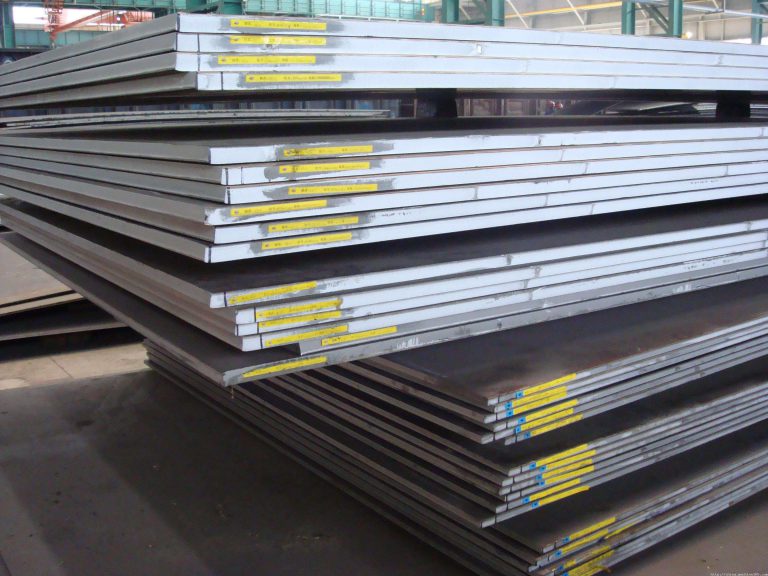ASME sa 516 gr 70 welding rod
SA516Gr.70 is widely used in petroleum, chemical, power station, boiler, and other industries used to make reactors, heat exchangers, separators, spherical tanks, gas tanks, liquefied gas tanks, nuclear reactor pressure shells, boiler drums, liquefied petroleum
Equipment and components such as gas cylinders, high-pressure water pipes of hydropower stations, and turbine volutes.
A516Gr70N meets the requirements of (ASME) ASTMA516/A516M standards, and fully meets the needs of oil gas with a high content of sulfur and hydrogen, reduces sulfur and hydrogen corrosion, reduces equipment maintenance, and increases equipment service life.
The steel plate has the following characteristics: good impact resistance, low-temperature deformation, good welding performance, good fatigue resistance, good anti-layer cracking performance, microalloying, high purity, low carbon equivalent, strong resistance to sulfur and hydrogen,
The products have good dimensional tolerances and surface quality.
We are ASME SA516 Gr.70 and ASME SA516GR.70 steel plate manufacturers,SA516GR.70 stocklist, SA516GR.70 cutting parts, SA 516 GR 70 machined parts supplier. Gangsteel exporter ASME SA516 Grade 70|ASME SA516GR.70 steel plate. SA516GR70 is a carbon pressure vessel steel grade. ASME SA516 GR.70 steel plates stock supplier.Keywords: ASME A516 Grade 70, ASME A516GR.70, ASME A516GR70, ASME A516 GR.70 SA516 Grade 70 steel is a carbon pressure vessel steel grade for moderate and lower temperature service.
SA516 Grade 70 usual request normalized if thickness above 40mm, if not, Gangsteel usual delivery in hot rolled or control rolled station. A516 Gr.70+N or A516gr70N mean that steel grade must be normalized in any thickness.

Heat treatment
1.·SA515Gr60, SA515Gr70, SA516Gr60, SA516Gr70, SA516Gr60N, SA516Gr70N thickness ≤1.5in, (40mm) steel plate is usually supplied in rolled state, steel plate can also be ordered by normalizing or stress relief, or normalizing plus stress relief.
2. Thickness>1.5in.(40mm) steel plate should be normalized.
3. Unless otherwise specified by the buyer, the thickness ≤ 1.5in, (40mm) steel plate, when notch toughness is required, normalizing should be carried out.
4. If approved by the buyer, it is allowed to use a cooling rate greater than that in the air to improve toughness, but the steel plate only needs to be in the range of 1100-1300°F (595-705°C) subsequently
Pretty much all of the widespread engineering metals are additionally used in the form of sheets. Some of them are carbon steel, chrome steel, copper and aluminium. Choosing the best one for you comes all the way down to the appliance and necessities of your product. Foils, sheets and plates are pretty much the same, with the only distinction being in thickness. Thickness is measured in three ways – millimetres, mils and gauges.
Deep drawing is a sheet steel forming process in which a sheet’s shape is modified to a desired form in multiple stages using a sequence of dies. Only if the depth of the form fashioned exceeds the original diameter of the sheet, it’s considered deep drawing.
The tensile strength of SA516Gr70 is 70 kilopounds per square inch, which is more than 482 as everyone usually says.
The main element content is C Mn Si, and the control of p and s determines its performance.
There are very few other trace elements.
Standard Specification for Carbon Steel Plates for Medium and Low-Temperature Pressure Vessels
SA516Gr70 Chemical detail
C≤0.30��Mn��0.79-1.30��P≤0.035��S��≤0.035��Si��0.13-0.45
SA516Gr70 Property Grade U.S (SI), Tensile strength ksi(MPa) 70 (485) and 70-90 (485-620)
asme sa 516 specification
- The table above reveals commonplace thicknesses for both sheet metal and metallic plates.
- There are two methods of manufacturing sheet steel – hot rolling and chilly rolling.
- As you possibly can see, each sort of steel has its personal requirements.
- Looking at the usual thickness desk above, you’ll be able to see how these two are used.
- In case of building steels, chilly rolling solely goes as much as three mm.
- From there on, the sheets and plates are hot rolled for cost-efficiency purposes.
Many ASME standards are cited by government businesses as tools to satisfy their regulatory goals. ASME’s requirements are utilized in more than 100 international locations and have been translated into numerous languages. English wheelThis forming course of uses an English wheel to stretch and curve flat metal sheets into required shapes.
Four grades having minimum Tensile Strengths ranging of 55 ksi to 70 ksi are available. Steel boiler plate is totally killed, nice-grained, thick carbon manganese metal sa516gr.70 steel supplier sheet for boiler and strain vessel purposes with a assured minimal tensile strength of 460 MPa.
The American Society for Testing and Materials and the American Society for Structural Engineers each created several totally different standards of steel and different metals. Many of those standards are related or even equivalent, including these for the various grades of steel. When positioned aspect by aspect, the A36 and SA36 grades have minor differences based on standards of the individual companies. The sheet steel knowledge table under covers all the standard alloy grades of aluminium.
asme sa 516 gr 70 density in kg/m3
Wheeling is mainly used in producing low volume customised elements for old vehicles. In this process, a long sheet of steel is bent round a straight axis going via the material. A ‘V’, ‘U’, or a channel-formed materials could also be shaped depending on the punch and the die. Photochemical machining is a process during which managed corrosion is carried out to create sheet metallic elements as per requirements. Incremental sheet forming is a metalworking course of to give a sheet steel a sure shape.
What is SA means in ASME?
Steel boiler plate is fully killed, fine-grained, thick carbon manganese steel sheet for boiler and pressure vessel applications with a guaranteed minimum tensile strength of 460 MPa.
